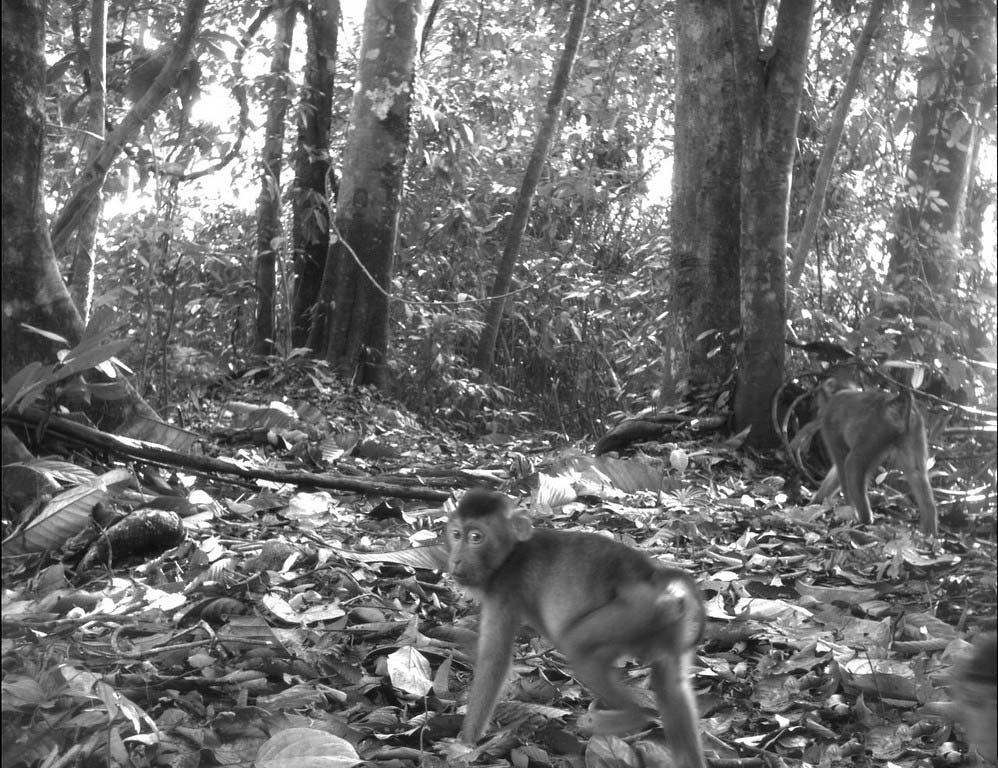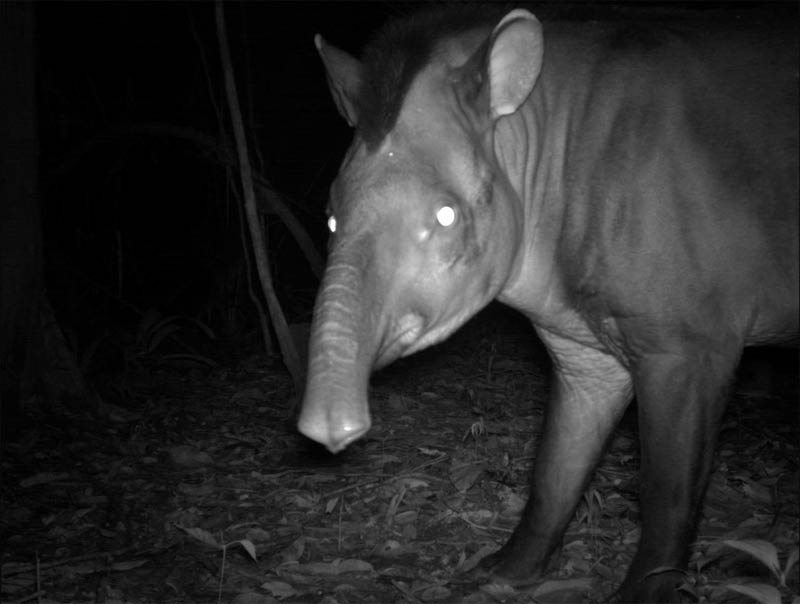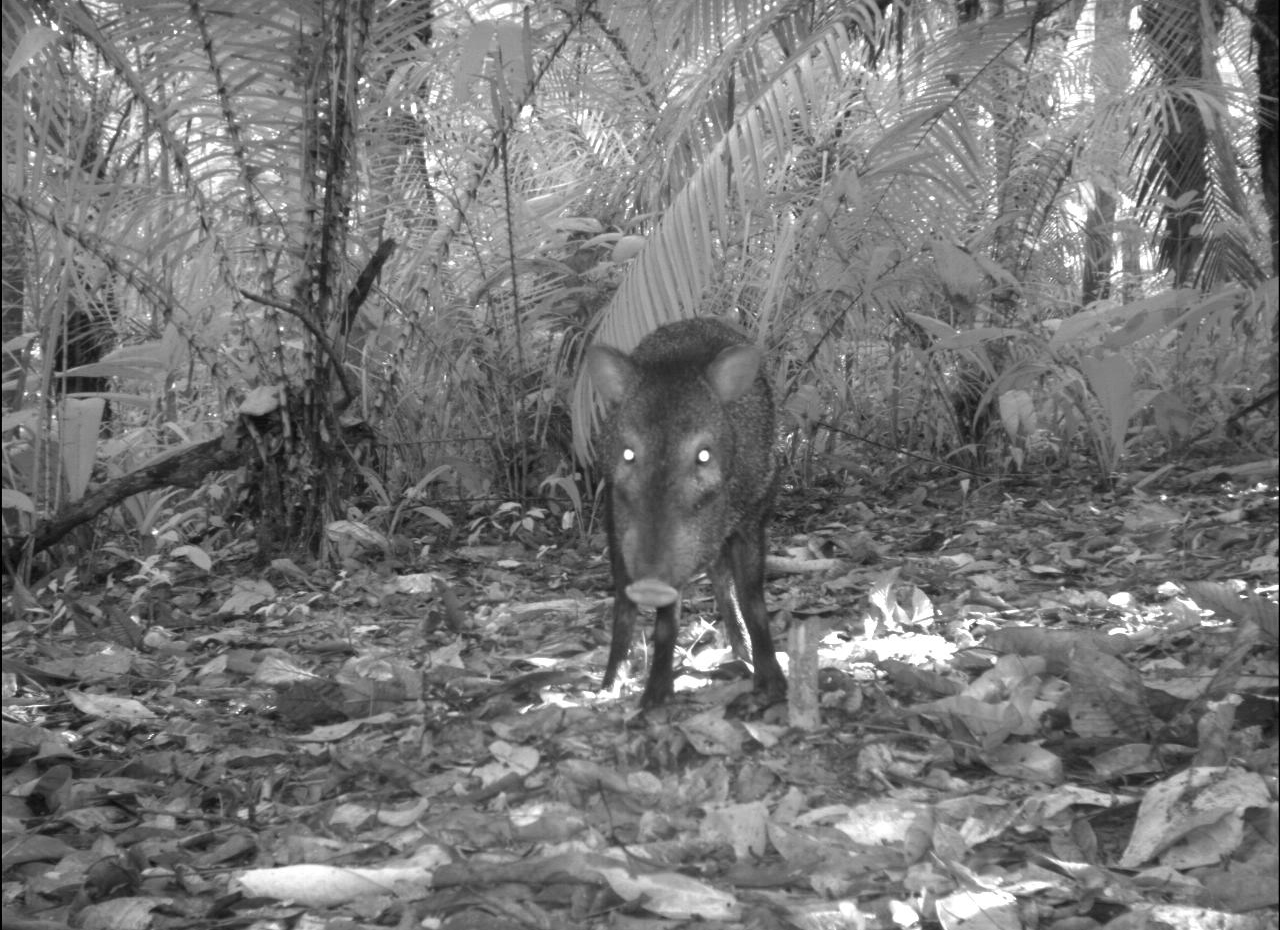Camera Trapped: Elusive Wildlife Caught in Photos
Cat Eyes

With hundreds of camera traps, a team of researchers has documented 105 mammal species at seven tropical-forest sites across the globe. This image of an ocelot (Leopardus pardalis) was taken at Volcan Barva, Costa Rica. It's one of nearly 52,000 photos, taken as part of the first global camera trap mammal study done by The Tropical Ecology Assessment and Monitoring Network (TEAM).
Sly Cat

An African leopard (Panthera pardus), a near-threatened species, caught in a camera-trap photo in the Udzungwa Mountains, Tanzania.
Fuzzball

A Southern pig-tailed macaque (Macaca nemestrina) captured in a photo in Bukit Barisan Selatan, Indonesia.
Pig Tails

Now you can see why the animal is called the pig-tailed macaque.
Spots

A lowland paca (Cuniculus paca) in Manaus, Brazil.
Night Lights

A South American tapir (Tapirus terrestris) caught on candid camera in Central Curiname Nature Preserve.
Chimp Mug

A common chimpanzee (Pan troglodytes) says "cheese" as a camera trap snaps its mug in Bwindi Impenetrable Forest, Uganda. Chimpanzees are listed as endangered species.
Get the world’s most fascinating discoveries delivered straight to your inbox.
Here Kitty, Kitty

A camera trap caught this jaguar (Panthera onca), a near threatened species, in Central Suriname Nature Reserve. This protected area was found to have the greatest species diversity.
Giant Anteater

Myrmecophaga tridactyla (Giant anteater) is a vulnerable species, photographed here in Manaus, Brazil. The image is part of the first "Global Camera Trap Mammal” study.
Indian Muntjak

An Indian muntjak (Muntiacus muntjak) at Nam Kading, Lao People's Democratic Republic; this site showed the lowest species diversity of the seven sites studied.
Collared Peccary

A collared peccary (Pecari tajacu) spotted at the high-diversity site of Central Suriname Nature Reserve.
Jeanna Bryner is managing editor of Scientific American. Previously she was editor in chief of Live Science and, prior to that, an editor at Scholastic's Science World magazine. Bryner has an English degree from Salisbury University, a master's degree in biogeochemistry and environmental sciences from the University of Maryland and a graduate science journalism degree from New York University. She has worked as a biologist in Florida, where she monitored wetlands and did field surveys for endangered species, including the gorgeous Florida Scrub Jay. She also received an ocean sciences journalism fellowship from the Woods Hole Oceanographic Institution. She is a firm believer that science is for everyone and that just about everything can be viewed through the lens of science.


